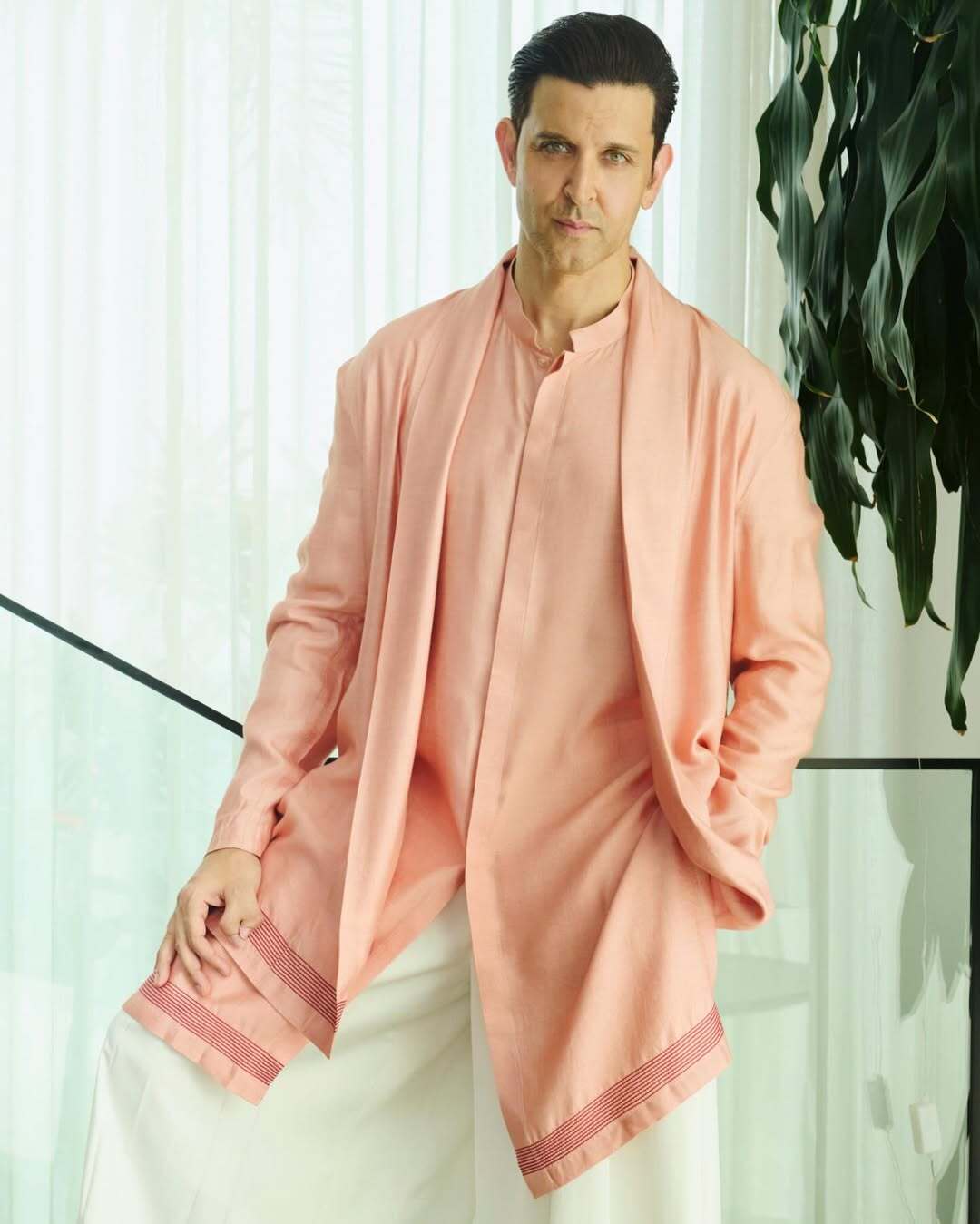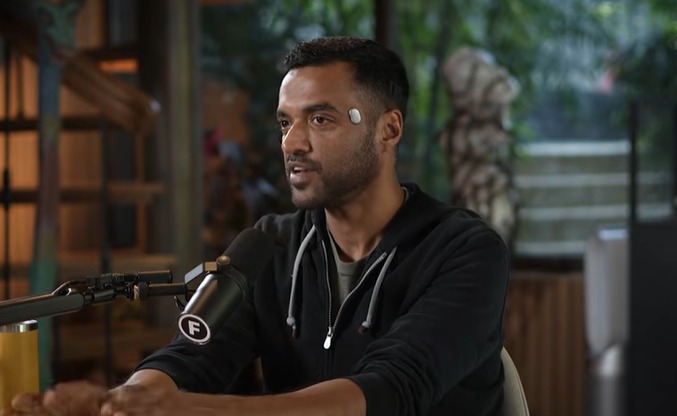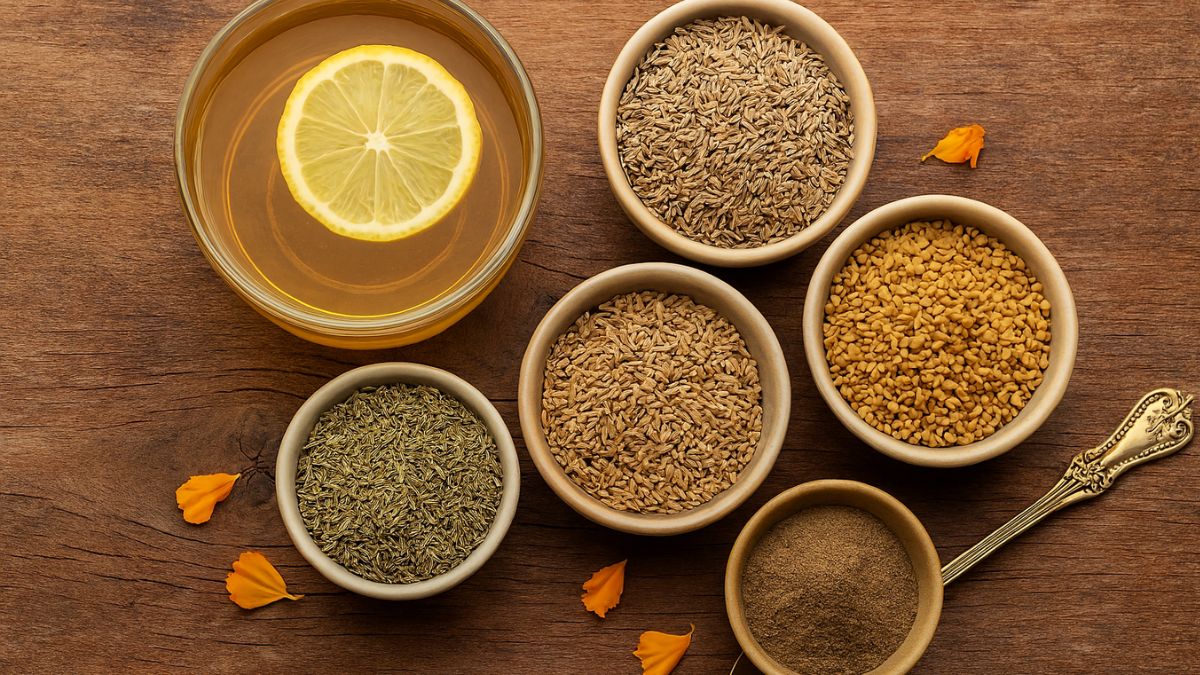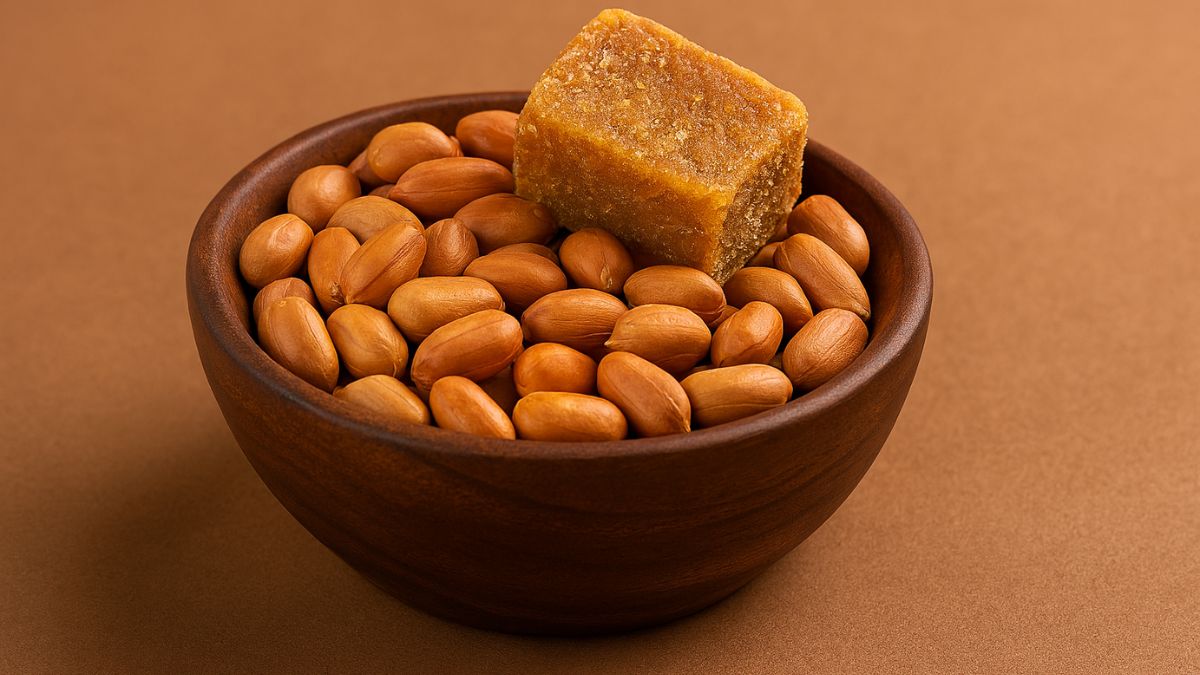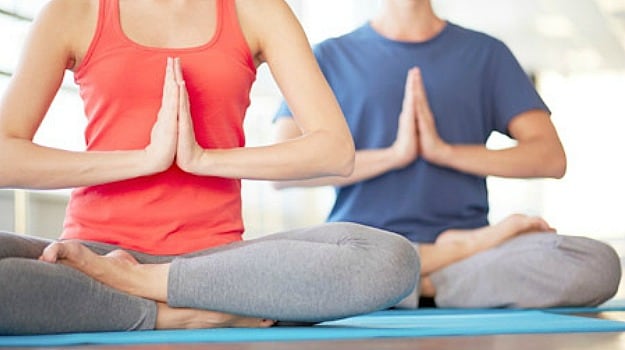It wouldn’t be a stretch to say that my work drives me to remain fit. No, I am not in rescue operations but yes, I still need to save myself from sudden snack attacks. I exercise to eat.I was a fitness freak until I broke up with my gym. I have to confess, we were just not working out. I’m not complaining but it left me exhausted and drained. There was pain, more physical than emotional. I took to running every morning as a rebound but lacked the motivation to keep up.(The Truth About Yoga: 5 Myths That Are Just Silly)
While I was looking for something new to cling to, I bumped into yoga which has been a recent obsession. Like I always say, all things old are new again. The good talk that’s being doing the rounds, courtesy, International Day of Yoga (June 21), lightened a spark of inspiration. I decided to hit up on my first yoga class. And, I’m here to break it down for you. Wear it RightWhat do you really need? Your body, your mind and some enthusiasm but it will also help to have a yoga mat, yoga pants with elastic waists and a comfortable t-shirt that’s not too baggy. It is almost always done barefoot. You should opt for clothing that hugs your body shape and allows easy movement. Avoid tops with loose necklines or collars as it can slide down. Wear clothes made with a breathable material, don’t opt for lycra or nylon as you may tend to slip while performing some poses. I’d say give blacks and whites a miss. That said, yoga is not about how you look, it’s about how you feel.(Stress Buster: Yoga is What You Need for a Healthy Mind)Pick Your StyleFind out what’s right for you. There is something in yoga for everyone. Most beginners’ courses can help you improve your strength, flexibility and balance. Unlike other forms of exercise, yoga also releases tension, calms your mind and helps you relax. To get the most out of your practise, choose a yoga style that matches your current fitness levels and goals. Figure out your strengths and weaknesses and talk to your instructor regarding the best style for you.
Wear it RightWhat do you really need? Your body, your mind and some enthusiasm but it will also help to have a yoga mat, yoga pants with elastic waists and a comfortable t-shirt that’s not too baggy. It is almost always done barefoot. You should opt for clothing that hugs your body shape and allows easy movement. Avoid tops with loose necklines or collars as it can slide down. Wear clothes made with a breathable material, don’t opt for lycra or nylon as you may tend to slip while performing some poses. I’d say give blacks and whites a miss. That said, yoga is not about how you look, it’s about how you feel.(Stress Buster: Yoga is What You Need for a Healthy Mind)Pick Your StyleFind out what’s right for you. There is something in yoga for everyone. Most beginners’ courses can help you improve your strength, flexibility and balance. Unlike other forms of exercise, yoga also releases tension, calms your mind and helps you relax. To get the most out of your practise, choose a yoga style that matches your current fitness levels and goals. Figure out your strengths and weaknesses and talk to your instructor regarding the best style for you. Being a BeginnerOuch. The thought of all that gear and those asanas puts a knot in your stomach? Honestly, I wasn’t sure if I’d be able to get into a pose but the challenge was to get out of it. It’s easy to get stuck here but don’t get intimidated or overly excited. Start slow, you’re not expected to set a world record on day one. Another thing, you do not necessarily have to be flexible to practice yoga. These poses are meant to help you improve flexibility and build strength. You may feel a little sore initially, but the practise should not be painful or exhausting. I struggled with stretches and slight muscle pain as the body loosened up. Stick to the basics and you’ll shine no matter what.(Yoga for Weight Loss: 6 Ways to Get Back in Shape)Catch Your BreathBreathe in, breathe out, and breathe right. You may have never considered it to be one, but breathing is a form of exercise. Most of you may have known that you should never practise an asana while breathing through the mouth. You have to inhale and exhale through the nose. In yogic practise, it is believed that prana or life force can only be absorbed through nasal breathing. The first thing that I was taught was how to breathe correctly. It was the diaphragmatic breath, in which you inhale air that first fills the lower belly that protrudes out (this activated first and second chakras), it rises through the rib cage and finally moves out through the upper chest and throat.
Being a BeginnerOuch. The thought of all that gear and those asanas puts a knot in your stomach? Honestly, I wasn’t sure if I’d be able to get into a pose but the challenge was to get out of it. It’s easy to get stuck here but don’t get intimidated or overly excited. Start slow, you’re not expected to set a world record on day one. Another thing, you do not necessarily have to be flexible to practice yoga. These poses are meant to help you improve flexibility and build strength. You may feel a little sore initially, but the practise should not be painful or exhausting. I struggled with stretches and slight muscle pain as the body loosened up. Stick to the basics and you’ll shine no matter what.(Yoga for Weight Loss: 6 Ways to Get Back in Shape)Catch Your BreathBreathe in, breathe out, and breathe right. You may have never considered it to be one, but breathing is a form of exercise. Most of you may have known that you should never practise an asana while breathing through the mouth. You have to inhale and exhale through the nose. In yogic practise, it is believed that prana or life force can only be absorbed through nasal breathing. The first thing that I was taught was how to breathe correctly. It was the diaphragmatic breath, in which you inhale air that first fills the lower belly that protrudes out (this activated first and second chakras), it rises through the rib cage and finally moves out through the upper chest and throat. It is also known as the ujjayi or victory breathing. Another thing, you need to match the length of your inhales to the length of your exhales. Try to make it even while increasing the span and deepening at the time but not to an extent where it feels strained or forced. You should have the consciousness of your breath. It sounds easy but the first time I applied it along with the asanas I felt lost. You have to try and master the pose and at the same time focus on the rhythm, pace and sound of your breath. That was a bit challenging but slowly you gain steadiness, resonance and depth. Yoga poses require free circulation of blood and flow of oxygen to muscles and therefore, you shouldn’t try and hold your breath.(Yoga: Is it Worth it?)The Balancing ActYou may think that getting into a pose is all that you need to learn but the real deal is to actually try and hold it. Concentrate on the alignment but don’t let that be your focus. Your mind should be occupied with creating a balance and not the posture. When you hold a pose, adjust and readjust till you create a balance. Maintaining the poses cultivates concentration.Rest and Restore
It is also known as the ujjayi or victory breathing. Another thing, you need to match the length of your inhales to the length of your exhales. Try to make it even while increasing the span and deepening at the time but not to an extent where it feels strained or forced. You should have the consciousness of your breath. It sounds easy but the first time I applied it along with the asanas I felt lost. You have to try and master the pose and at the same time focus on the rhythm, pace and sound of your breath. That was a bit challenging but slowly you gain steadiness, resonance and depth. Yoga poses require free circulation of blood and flow of oxygen to muscles and therefore, you shouldn’t try and hold your breath.(Yoga: Is it Worth it?)The Balancing ActYou may think that getting into a pose is all that you need to learn but the real deal is to actually try and hold it. Concentrate on the alignment but don’t let that be your focus. Your mind should be occupied with creating a balance and not the posture. When you hold a pose, adjust and readjust till you create a balance. Maintaining the poses cultivates concentration.Rest and Restore One of the most important things that I learnt was how after every asana, we would rest which in itself is a form of exercise for the mind. By resting I mean, in Shavasana (corpse pose) where you relax lying down on your back and concentrate on your breathing. It is a relaxation technique to allow your functions to pause and heal. I also felt the child pose helped me relieve the tensions from the body.(International Experts: Yoga Can be Good for Your Heart)Eating 30 minutes Before Your ClassYoga involves lot of tossing, turning and inversions which can make you feel uncomfortable if your food hasn’t been digested. Try having a light meal or munch on something snacky like nuts, juice, fruits or yogurt. Try a combination of protein and carbs to keep you fuelled. Avoid drinking too much water just before you start. While practising yoga your stomach should be empty.Time and Frequency of PractiseYou don’t have to slog yourself every day, three to four times a week seemed ideal to me. You don’t have to exert yourself. Again, find your balance, do what you can and don’t worry about it. As far as the time is concerned, there are no rules but you can define according to the type of posture. Some of them are energizing while others are calming. In general, a morning session can be quite invigorating and helps you glide through the day. You can also practise early evening, but around that time focus on relaxing asanas.(Yoga May Help Overcome Anxiety Disorders)Finally, what is it like? I would say the first day is gentle, the second is challenging but as you continue you feel more relaxed and energised. If body and mind is your fitness mantra, this is what you’ve been looking for.
One of the most important things that I learnt was how after every asana, we would rest which in itself is a form of exercise for the mind. By resting I mean, in Shavasana (corpse pose) where you relax lying down on your back and concentrate on your breathing. It is a relaxation technique to allow your functions to pause and heal. I also felt the child pose helped me relieve the tensions from the body.(International Experts: Yoga Can be Good for Your Heart)Eating 30 minutes Before Your ClassYoga involves lot of tossing, turning and inversions which can make you feel uncomfortable if your food hasn’t been digested. Try having a light meal or munch on something snacky like nuts, juice, fruits or yogurt. Try a combination of protein and carbs to keep you fuelled. Avoid drinking too much water just before you start. While practising yoga your stomach should be empty.Time and Frequency of PractiseYou don’t have to slog yourself every day, three to four times a week seemed ideal to me. You don’t have to exert yourself. Again, find your balance, do what you can and don’t worry about it. As far as the time is concerned, there are no rules but you can define according to the type of posture. Some of them are energizing while others are calming. In general, a morning session can be quite invigorating and helps you glide through the day. You can also practise early evening, but around that time focus on relaxing asanas.(Yoga May Help Overcome Anxiety Disorders)Finally, what is it like? I would say the first day is gentle, the second is challenging but as you continue you feel more relaxed and energised. If body and mind is your fitness mantra, this is what you’ve been looking for.
While I was looking for something new to cling to, I bumped into yoga which has been a recent obsession. Like I always say, all things old are new again. The good talk that’s being doing the rounds, courtesy, International Day of Yoga (June 21), lightened a spark of inspiration. I decided to hit up on my first yoga class. And, I’m here to break it down for you.
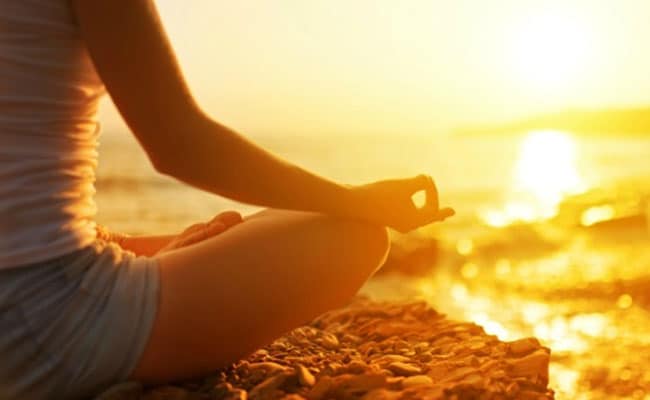 Wear it RightWhat do you really need? Your body, your mind and some enthusiasm but it will also help to have a yoga mat, yoga pants with elastic waists and a comfortable t-shirt that’s not too baggy. It is almost always done barefoot. You should opt for clothing that hugs your body shape and allows easy movement. Avoid tops with loose necklines or collars as it can slide down. Wear clothes made with a breathable material, don’t opt for lycra or nylon as you may tend to slip while performing some poses. I’d say give blacks and whites a miss. That said, yoga is not about how you look, it’s about how you feel.(Stress Buster: Yoga is What You Need for a Healthy Mind)Pick Your StyleFind out what’s right for you. There is something in yoga for everyone. Most beginners’ courses can help you improve your strength, flexibility and balance. Unlike other forms of exercise, yoga also releases tension, calms your mind and helps you relax. To get the most out of your practise, choose a yoga style that matches your current fitness levels and goals. Figure out your strengths and weaknesses and talk to your instructor regarding the best style for you.
Wear it RightWhat do you really need? Your body, your mind and some enthusiasm but it will also help to have a yoga mat, yoga pants with elastic waists and a comfortable t-shirt that’s not too baggy. It is almost always done barefoot. You should opt for clothing that hugs your body shape and allows easy movement. Avoid tops with loose necklines or collars as it can slide down. Wear clothes made with a breathable material, don’t opt for lycra or nylon as you may tend to slip while performing some poses. I’d say give blacks and whites a miss. That said, yoga is not about how you look, it’s about how you feel.(Stress Buster: Yoga is What You Need for a Healthy Mind)Pick Your StyleFind out what’s right for you. There is something in yoga for everyone. Most beginners’ courses can help you improve your strength, flexibility and balance. Unlike other forms of exercise, yoga also releases tension, calms your mind and helps you relax. To get the most out of your practise, choose a yoga style that matches your current fitness levels and goals. Figure out your strengths and weaknesses and talk to your instructor regarding the best style for you.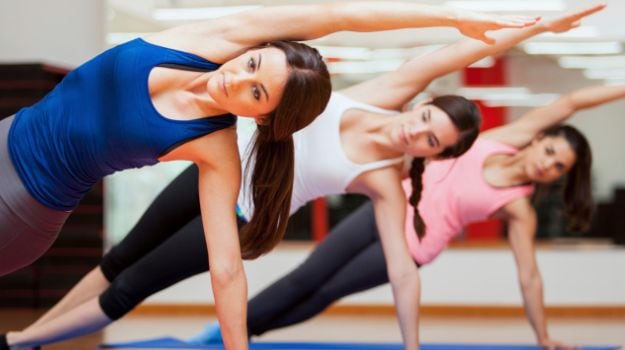 Being a BeginnerOuch. The thought of all that gear and those asanas puts a knot in your stomach? Honestly, I wasn’t sure if I’d be able to get into a pose but the challenge was to get out of it. It’s easy to get stuck here but don’t get intimidated or overly excited. Start slow, you’re not expected to set a world record on day one. Another thing, you do not necessarily have to be flexible to practice yoga. These poses are meant to help you improve flexibility and build strength. You may feel a little sore initially, but the practise should not be painful or exhausting. I struggled with stretches and slight muscle pain as the body loosened up. Stick to the basics and you’ll shine no matter what.(Yoga for Weight Loss: 6 Ways to Get Back in Shape)Catch Your BreathBreathe in, breathe out, and breathe right. You may have never considered it to be one, but breathing is a form of exercise. Most of you may have known that you should never practise an asana while breathing through the mouth. You have to inhale and exhale through the nose. In yogic practise, it is believed that prana or life force can only be absorbed through nasal breathing. The first thing that I was taught was how to breathe correctly. It was the diaphragmatic breath, in which you inhale air that first fills the lower belly that protrudes out (this activated first and second chakras), it rises through the rib cage and finally moves out through the upper chest and throat.
Being a BeginnerOuch. The thought of all that gear and those asanas puts a knot in your stomach? Honestly, I wasn’t sure if I’d be able to get into a pose but the challenge was to get out of it. It’s easy to get stuck here but don’t get intimidated or overly excited. Start slow, you’re not expected to set a world record on day one. Another thing, you do not necessarily have to be flexible to practice yoga. These poses are meant to help you improve flexibility and build strength. You may feel a little sore initially, but the practise should not be painful or exhausting. I struggled with stretches and slight muscle pain as the body loosened up. Stick to the basics and you’ll shine no matter what.(Yoga for Weight Loss: 6 Ways to Get Back in Shape)Catch Your BreathBreathe in, breathe out, and breathe right. You may have never considered it to be one, but breathing is a form of exercise. Most of you may have known that you should never practise an asana while breathing through the mouth. You have to inhale and exhale through the nose. In yogic practise, it is believed that prana or life force can only be absorbed through nasal breathing. The first thing that I was taught was how to breathe correctly. It was the diaphragmatic breath, in which you inhale air that first fills the lower belly that protrudes out (this activated first and second chakras), it rises through the rib cage and finally moves out through the upper chest and throat. It is also known as the ujjayi or victory breathing. Another thing, you need to match the length of your inhales to the length of your exhales. Try to make it even while increasing the span and deepening at the time but not to an extent where it feels strained or forced. You should have the consciousness of your breath. It sounds easy but the first time I applied it along with the asanas I felt lost. You have to try and master the pose and at the same time focus on the rhythm, pace and sound of your breath. That was a bit challenging but slowly you gain steadiness, resonance and depth. Yoga poses require free circulation of blood and flow of oxygen to muscles and therefore, you shouldn’t try and hold your breath.(Yoga: Is it Worth it?)The Balancing ActYou may think that getting into a pose is all that you need to learn but the real deal is to actually try and hold it. Concentrate on the alignment but don’t let that be your focus. Your mind should be occupied with creating a balance and not the posture. When you hold a pose, adjust and readjust till you create a balance. Maintaining the poses cultivates concentration.Rest and Restore
It is also known as the ujjayi or victory breathing. Another thing, you need to match the length of your inhales to the length of your exhales. Try to make it even while increasing the span and deepening at the time but not to an extent where it feels strained or forced. You should have the consciousness of your breath. It sounds easy but the first time I applied it along with the asanas I felt lost. You have to try and master the pose and at the same time focus on the rhythm, pace and sound of your breath. That was a bit challenging but slowly you gain steadiness, resonance and depth. Yoga poses require free circulation of blood and flow of oxygen to muscles and therefore, you shouldn’t try and hold your breath.(Yoga: Is it Worth it?)The Balancing ActYou may think that getting into a pose is all that you need to learn but the real deal is to actually try and hold it. Concentrate on the alignment but don’t let that be your focus. Your mind should be occupied with creating a balance and not the posture. When you hold a pose, adjust and readjust till you create a balance. Maintaining the poses cultivates concentration.Rest and Restore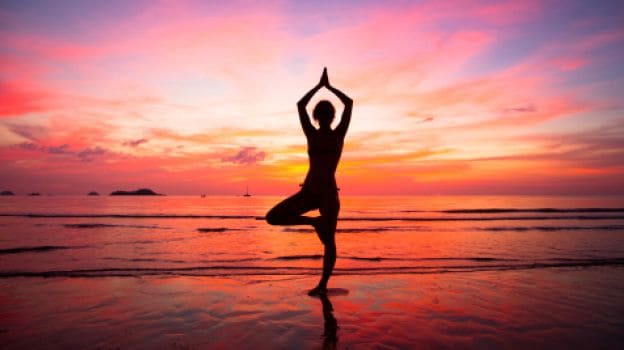 One of the most important things that I learnt was how after every asana, we would rest which in itself is a form of exercise for the mind. By resting I mean, in Shavasana (corpse pose) where you relax lying down on your back and concentrate on your breathing. It is a relaxation technique to allow your functions to pause and heal. I also felt the child pose helped me relieve the tensions from the body.(International Experts: Yoga Can be Good for Your Heart)Eating 30 minutes Before Your ClassYoga involves lot of tossing, turning and inversions which can make you feel uncomfortable if your food hasn’t been digested. Try having a light meal or munch on something snacky like nuts, juice, fruits or yogurt. Try a combination of protein and carbs to keep you fuelled. Avoid drinking too much water just before you start. While practising yoga your stomach should be empty.Time and Frequency of PractiseYou don’t have to slog yourself every day, three to four times a week seemed ideal to me. You don’t have to exert yourself. Again, find your balance, do what you can and don’t worry about it. As far as the time is concerned, there are no rules but you can define according to the type of posture. Some of them are energizing while others are calming. In general, a morning session can be quite invigorating and helps you glide through the day. You can also practise early evening, but around that time focus on relaxing asanas.(Yoga May Help Overcome Anxiety Disorders)Finally, what is it like? I would say the first day is gentle, the second is challenging but as you continue you feel more relaxed and energised. If body and mind is your fitness mantra, this is what you’ve been looking for.
One of the most important things that I learnt was how after every asana, we would rest which in itself is a form of exercise for the mind. By resting I mean, in Shavasana (corpse pose) where you relax lying down on your back and concentrate on your breathing. It is a relaxation technique to allow your functions to pause and heal. I also felt the child pose helped me relieve the tensions from the body.(International Experts: Yoga Can be Good for Your Heart)Eating 30 minutes Before Your ClassYoga involves lot of tossing, turning and inversions which can make you feel uncomfortable if your food hasn’t been digested. Try having a light meal or munch on something snacky like nuts, juice, fruits or yogurt. Try a combination of protein and carbs to keep you fuelled. Avoid drinking too much water just before you start. While practising yoga your stomach should be empty.Time and Frequency of PractiseYou don’t have to slog yourself every day, three to four times a week seemed ideal to me. You don’t have to exert yourself. Again, find your balance, do what you can and don’t worry about it. As far as the time is concerned, there are no rules but you can define according to the type of posture. Some of them are energizing while others are calming. In general, a morning session can be quite invigorating and helps you glide through the day. You can also practise early evening, but around that time focus on relaxing asanas.(Yoga May Help Overcome Anxiety Disorders)Finally, what is it like? I would say the first day is gentle, the second is challenging but as you continue you feel more relaxed and energised. If body and mind is your fitness mantra, this is what you’ve been looking for.Advertisement

